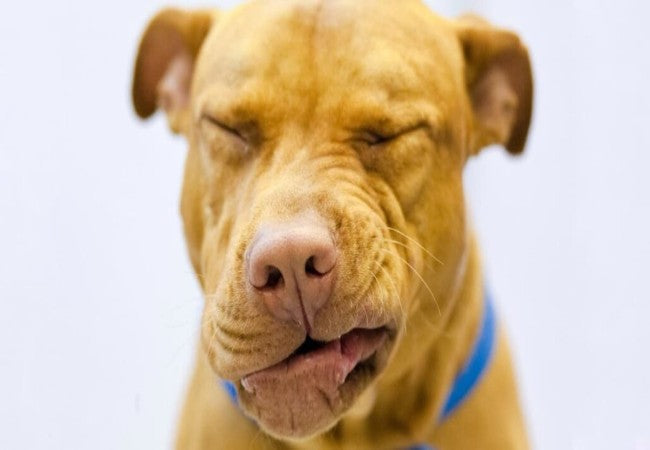Runny Nose in Dogs 2025: Vet Guide to Causes & Treatment 🤧🐶

In this article
Runny Nose in Dogs 2025: Vet Guide to Causes & Treatment 🤧🐶
By Dr. Duncan Houston BVSc
A runny nose—medically known as rhinorrhea—can range from benign to alarming. While a little clear dribble may be innocuous, yellow, green, or bloody discharge often signals infection or another serious condition. This year’s expert guide helps you navigate causes, diagnostics, and treatment to ensure your pup’s nose returns to normal.
1. 🤔 What’s Normal vs Abnormal?
- Clear, thin discharge can be due to excitement, cooling off, or cold weather—often harmless.
- Thick yellow/green discharge may indicate bacterial or fungal infection, sinusitis, or blocked nasal passages.
- Blood-tinged or frequent sneezing requires veterinary evaluation—it could signal trauma, dental issues, or tumors.
2. 🧬 Possible Causes of a Runny Nose
• Allergies
Environmental allergens (pollen, dust, mold) can inflame nasal passages, causing watery discharge and sneezing.
• Infections
- Viral—canine distemper, parainfluenza, adenovirus, kennel cough.
- Bacterial—secondary to viruses, nasal sinusitis, Bordetella-related infections.
- Fungal—Aspergillus in German Shepherds; Cryptococcus.
- Parasitic—nasal mites cause reverse sneezing and discharge.
• Foreign Objects or Irritants
Grass awns, twigs, dust, or smoke can lodge or irritate nasal passages—and that leads to sneezing and discharge.
• Dental Disease & Cleft Palate
Infections from roots or palatal defects can drain into the nose, triggering discharge—dental X-rays help diagnose this.
• Chronic Rhinitis/Sinusitis
Long-term inflammation from trauma or immune issues, often with sneezing or nasal bone changes.
• Polyps, Tumors & Trauma
Nasal growths or fractures can cause persistent or bloody discharge, may require imaging or biopsy.
3. 🚨 When to Visit the Vet Immediately
- Worsening discharge color or thickness (yellow, green, bloody)
- Single-side discharge, sneezing, pawing at nose
- Coughing, difficulty breathing, fever, lethargy
- Persistent discharge lasting more than a few days
4. 🩺 Veterinary Diagnosis Process
- Physical exam, including a symmetrical nasal structure check
- Nasal swabs for cytology and cultures
- Blood tests and clotting profiles where infection or tumor is suspected
- X-ray or CT imaging for foreign bodies, bone changes, or tumors
- Rhinoscopy and biopsies under sedation for definitive diagnosis
- Dental X-rays when palatal or tooth-root issues are suspected
5. 🛠️ Treatment Strategies
Allergies
- Antihistamines or steroids for severe rhinitis
- Environmental control—air cleaners, hypoallergenic diets
Infections
- Bacterial: Oral or nebulized antibiotics
- Fungal: Infused antifungals for Aspergillus; oral treatment for Cryptococcus
- Nasal mites: Topical or oral parasiticides
Foreign Objects
Removal via rhinoscopy or forceps under sedation; possibly combined with antibiotics.
Dental or Cleft Issues
Extract infected teeth or surgically close palatal defects.
Tumors or Polyps
May require surgical removal, biopsy, chemotherapy, or radiation.
Ciliary Dyskinesia & Chronic Cases
Managed with regular nebulization and antibiotics as needed.
6. 🏡 Home-Care & Supportive Tips
- Clean nostrils gently with a warm damp cloth
- Use a cool-mist humidifier to soothe nasal passages
- Avoid smoke, perfumes, aerosols
- Offer hydration and nutrient-rich wet food
- Track symptoms and stay in touch via the Ask A Vet App
7. 🐕 Breed & Life-Stage Variations
| Breed/Stage | Common Causes | Care Tips |
|---|---|---|
| Brachycephalic | Conformational issues, infections | Manage breathing, monitor discharge, consider surgery |
| German Shepherd | Aspergillus risk | Watch for persistent clear/yellow discharge |
| Puppies | Viral infections, mites | Ensure vaccinations, parasite control |
| Seniors | Tumors, chronic sinusitis | Regular imaging, consider biopsy |
8. 🛡️ Preventing Nasal Issues
- Keep vaccines updated (distemper, kennel cough, parainfluenza)
- Maintain a clean, dust-free environment
- Protect from smoke and harsh cleaners
- Regular dental care and prompt tooth treatment
- Protect from nasal mites annually
- Monitor for changes in discharge or breathing
9. 📌 Summary of Key Points
- Clear discharge may be benign; thick, colored, or bloody discharge requires vet attention
- Causes range from allergies and infections to tumors and dental issues
- Diagnosis may require rhinoscopy, imaging, and cultures
- Treatments vary—antibiotics, antifungals, surgery, humidification
- Home care supports healing: cleaning, hydration, calming environment
- Prevention includes vaccines, dental health, and allergen control






